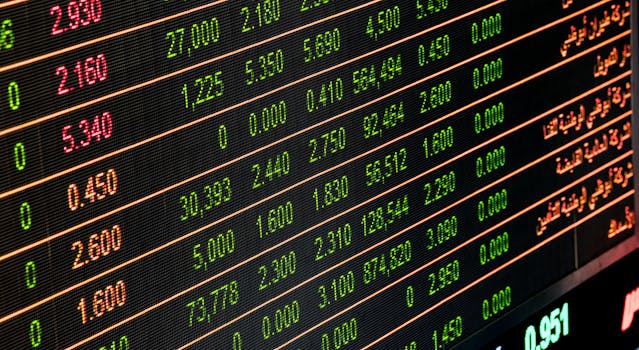Investing can be an overwhelming journey for many, especially with the myriad of options available today. One of the investment vehicles gaining popularity is the ETF, or Exchange-Traded Fund. In this article, we will explore what an ETF is, how it works, and whether it might be the right choice for your investment portfolio.
What Is an ETF?
An ETF, or Exchange-Traded Fund, is a type of investment fund and exchange-traded product that holds a collection of assets, such as stocks, bonds, commodities, or other securities. Similar to mutual funds, ETFs offer investors a diversified portfolio; however, they trade on stock exchanges like individual stocks. This means you can buy and sell ETFs throughout the trading day at market prices.
How Does an ETF Work?
ETFs function by pooling investor money to purchase a basket of securities. Here’s a step-by-step breakdown:
- Creation of the ETF: An ETF provider creates the fund, which is designed to track the performance of a specific index, sector, commodity, or asset class.
- Buying and Selling: Investors can buy shares of the ETF through a brokerage, just like they would with a stock. Prices fluctuate throughout the day based on supply and demand.
- Management: ETFs are typically passively managed, meaning they aim to replicate the performance of a specific index rather than trying to outperform it.
- Diversification: By investing in an ETF, you gain exposure to a variety of securities, which helps mitigate risk.
Types of ETFs
There are several types of ETFs, each catering to different investment strategies and objectives:
- Stock ETFs: These track a specific index or sector, such as the S&P 500 or technology stocks.
- Bond ETFs: These invest in bonds and are designed to provide income and reduce overall portfolio risk.
- Commodity ETFs: These hold physical commodities, like gold or oil, allowing investors to gain exposure to changes in commodity prices.
- Sector and Industry ETFs: These focus on specific sectors like health care, finance, or energy.
- International ETFs: These allow investors to diversify their portfolio by investing in foreign markets.
- Thematic ETFs: These focus on specific investment themes, such as renewable energy or emerging technologies.
Benefits of Investing in ETFs
Investing in ETFs offers several advantages:
- Diversification: ETFs provide instant diversification by holding a basket of securities, which can reduce the risk of investing in individual stocks.
- Liquidity: Since ETFs are traded on exchanges, they offer high liquidity, allowing investors to buy and sell quickly.
- Cost-Effective: ETFs generally have lower expense ratios compared to mutual funds, making them a more affordable investment option.
- Transparency: Most ETFs disclose their holdings on a daily basis, providing investors with insight into their investments.
- Tax Efficiency: ETFs typically have lower capital gains distributions compared to mutual funds, which can result in tax savings for investors.
Potential Drawbacks of ETFs
While ETFs have numerous benefits, they also come with some potential drawbacks:
- Market Risk: Like any investment in the stock market, ETFs are subject to market fluctuations, which can impact their value.
- Trading Costs: If you trade ETFs frequently, you may incur brokerage fees, which can eat into your overall returns.
- Tracking Error: While ETFs aim to replicate the performance of an index, discrepancies can occur, leading to tracking errors.
How to Choose the Right ETF for You
Selecting the right ETF involves considering several factors:
- Investment Goals: Determine what you want to achieve with your investments, such as long-term growth, income, or diversification.
- Risk Tolerance: Assess your ability to accept risk, as different ETFs carry varying levels of risk.
- Expense Ratios: Compare the costs associated with different ETFs, as they can impact your overall returns.
- Holdings: Review the underlying assets or securities within the ETF to ensure they align with your investment strategy.
Are ETFs Right for Your Investment Strategy?
Deciding whether ETFs are a good fit for your investment strategy depends on your individual circumstances:
- Long-Term Investors: If you’re looking for a focused, cost-effective way to diversify, ETFs can be a suitable choice.
- Active Traders: ETFs might also appeal to those who wish to capitalize on short-term market movements, thanks to their liquidity.
- Income Seekers: Bond or dividend-paying ETFs may suit investors looking for income streams.
How to Get Started with ETFs
If you decide to invest in ETFs, here’s how to get started:
- Research: Conduct thorough research on various ETFs to identify those that fit your objectives.
- Select a Brokerage: Choose a brokerage platform that supports ETF trading and has a user-friendly interface.
- Open an Account: Create and fund your brokerage account to start investing.
- Monitor Your Investments: Keep track of your ETF performance and adjust your portfolio as needed based on market conditions.
Conclusion
In summary, an ETF can be an effective investment tool for diversifying your portfolio and accessing various markets or sectors. Understanding how ETFs work, the benefits and drawbacks, as well as your investment goals, can empower you to make informed investment decisions. Before diving in, ensure that you conduct thorough research and consider consulting with a financial advisor to tailor your investment strategy to your personal needs. Whether ETFs are the right investment for you ultimately depends on your financial goals, risk tolerance, and investment strategy.
As always, the key to successful investing is to educate yourself, stay informed, and remain adaptable to market changes. With a suitable strategy in place, ETFs can play a significant role in achieving your financial objectives.



